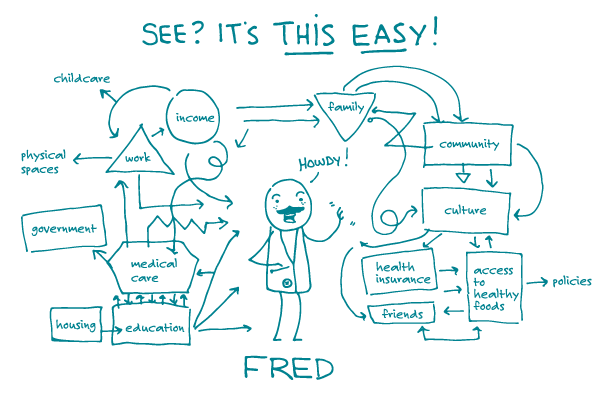
As health communicators, behavior change is our bread and butter. Often, our approach is to tell people to adopt healthy behaviors and ditch unhealthy ones.
This instinct makes sense. If your goal is to help Fred manage his diabetes, you might start by communicating directly with Fred. Maybe you’ll give him an easy-to-follow schedule for taking his insulin and share some healthy eating tips (written in plain language, of course).
So, is that it? Not according to the Social Ecological Model.
This model says that successful health promotion addresses both individuals and their environments. That’s because we don’t live our lives — or make our health decisions — in a vacuum. Whether we like it or not, our families, communities, culture, and other external factors all affect how we act. So, changing people’s environments can often change their behavior.
Take our pal Fred, for example. Fred might be more likely to take his insulin at the right time if his friends and family know the schedule and help remind him. And he might be more likely to eat healthy if fresh foods are easy to get at the corner store.
You might be thinking: That’s great, but how do I, a humble health communicator, change my readers’ environments? You may not be able to single-handedly rearrange your readers’ life circumstances. But you can help promote positive influences. For example, you could:
- Create a diabetes management campaign that targets patients’ social networks
- Work with local community groups to encourage shopkeepers to sell fresh fruits and vegetables at a fair price
As a health communicator, it’s important to understand the role a person’s environment plays in shaping health behavior. Some influences, like mass media or the national economy, are harder to change. But others, like social support and community resources, are within reach.
So give Fred a hand, and look for opportunities to support healthy choices by influencing environmental factors.
The bottom line: If you change people’s environments, you’ll be more likely to change their behaviors — so try taking a social ecological approach to health promotion.
Browse recent posts